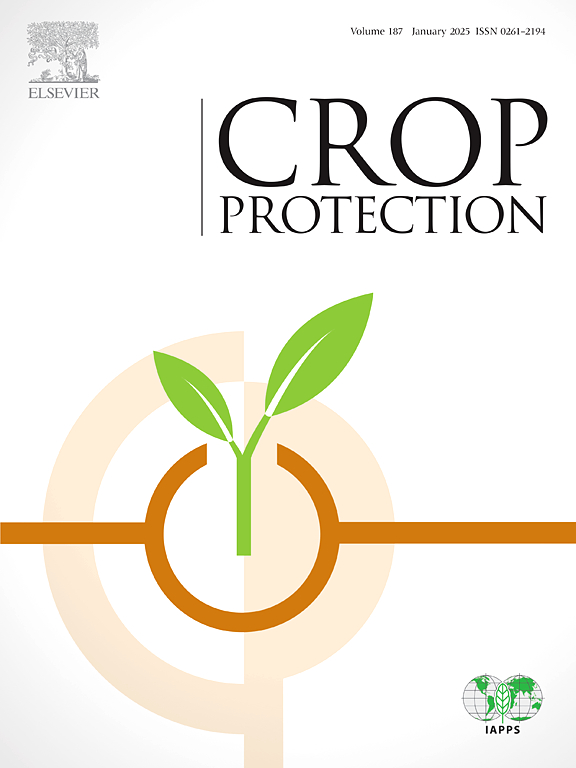Virulence of entomopathogenic nematodes, Steinernema siamkayai and Heterorhabditis indica, in the control of Opisina arenosella Walker, and their impact on two natural enemies, Bracon brevicornis Wesmael and Euborellia annulipes Lucas
IF 2.5
2区 农林科学
Q1 AGRONOMY
引用次数: 0
Abstract
Entomopathogenic nematodes (EPNs), specifically Steinernema siamkayai and Heterorhabditis indica, have been successfully used to control various soil-dwelling and above-ground lepidopteran insect pests. This study investigated the susceptibility of the coconut black-headed caterpillar Opisina arenosella, a serious pest of palm trees, to these two EPN species, as well as their impact on two natural insect enemies: the braconid wasp Bracon brevicornis and the ring-legged earwig Euborellia annulipes. Both EPN species demonstrated high efficacy against O. arenosella larvae, with mortality ranging from 60% to 100%, depending on the EPN concentrations within 72 h of exposure. Heterorhabditis indica and S. siamkayai exhibited median lethal concentration (LC50) values of 9 and 11 infective juveniles (IJs)/larva, respectively. Additionally, the first-instar larvae and pupae of B. brevicornis were highly susceptible to both EPN species, with mortality of 89.6%–96.3% for larvae and 58.9%–67.2% for pupae within five days. In contrast, E. annulipes nymphs and adults showed lower mortality across both developmental stages. In addition, O. arenosella larvae exhibited 100% mortality when the two EPN species were applied alongside either B. brevicornis or E. annulipes. However, EPN applications significantly reduced B. brevicornis oviposition and larval development, leading to decreased adult emergence. Both EPN species exhibited low virulence against various developmental stages of E. annulipes, with mortality ranging from 3.3% to 26.7% after seven days. These findings highlight the potential of EPNs as effective biological control agents for O. arenosella larvae and illustrate the complex interactions between two EPN species and other insect natural enemies.
求助全文
约1分钟内获得全文
求助全文
来源期刊

Crop Protection
农林科学-农艺学
CiteScore
6.10
自引率
3.60%
发文量
200
审稿时长
29 days
期刊介绍:
The Editors of Crop Protection especially welcome papers describing an interdisciplinary approach showing how different control strategies can be integrated into practical pest management programs, covering high and low input agricultural systems worldwide. Crop Protection particularly emphasizes the practical aspects of control in the field and for protected crops, and includes work which may lead in the near future to more effective control. The journal does not duplicate the many existing excellent biological science journals, which deal mainly with the more fundamental aspects of plant pathology, applied zoology and weed science. Crop Protection covers all practical aspects of pest, disease and weed control, including the following topics:
-Abiotic damage-
Agronomic control methods-
Assessment of pest and disease damage-
Molecular methods for the detection and assessment of pests and diseases-
Biological control-
Biorational pesticides-
Control of animal pests of world crops-
Control of diseases of crop plants caused by microorganisms-
Control of weeds and integrated management-
Economic considerations-
Effects of plant growth regulators-
Environmental benefits of reduced pesticide use-
Environmental effects of pesticides-
Epidemiology of pests and diseases in relation to control-
GM Crops, and genetic engineering applications-
Importance and control of postharvest crop losses-
Integrated control-
Interrelationships and compatibility among different control strategies-
Invasive species as they relate to implications for crop protection-
Pesticide application methods-
Pest management-
Phytobiomes for pest and disease control-
Resistance management-
Sampling and monitoring schemes for diseases, nematodes, pests and weeds.
 求助内容:
求助内容: 应助结果提醒方式:
应助结果提醒方式:


